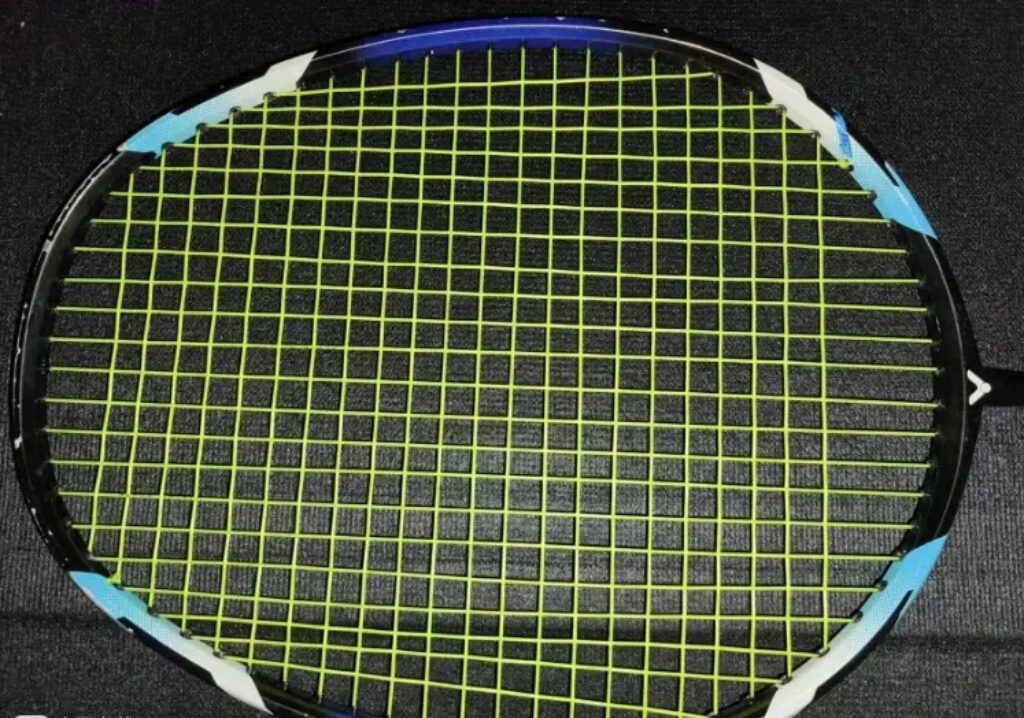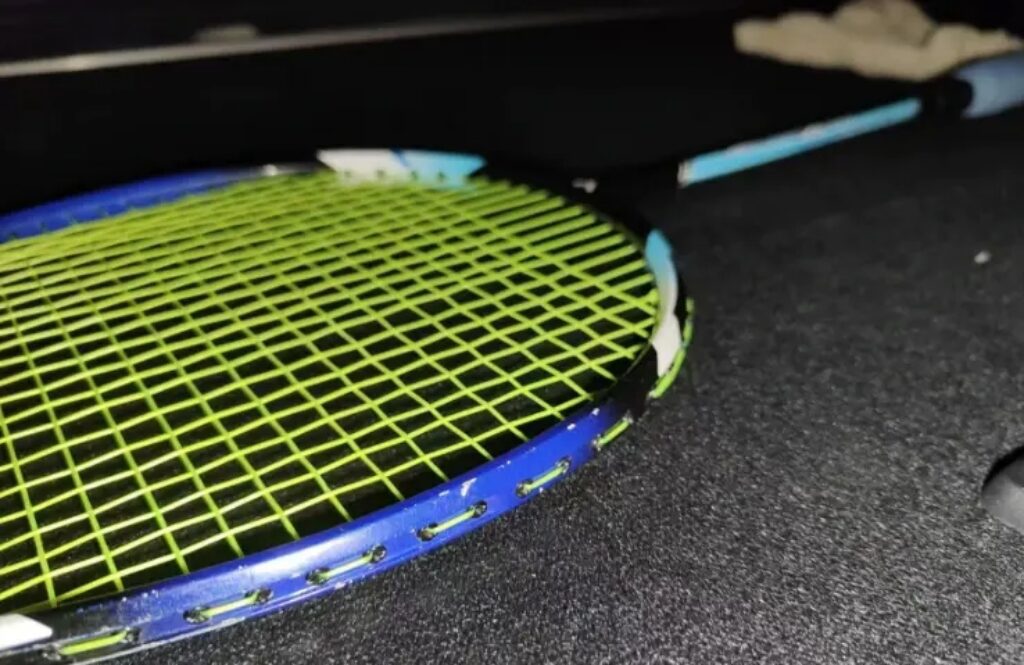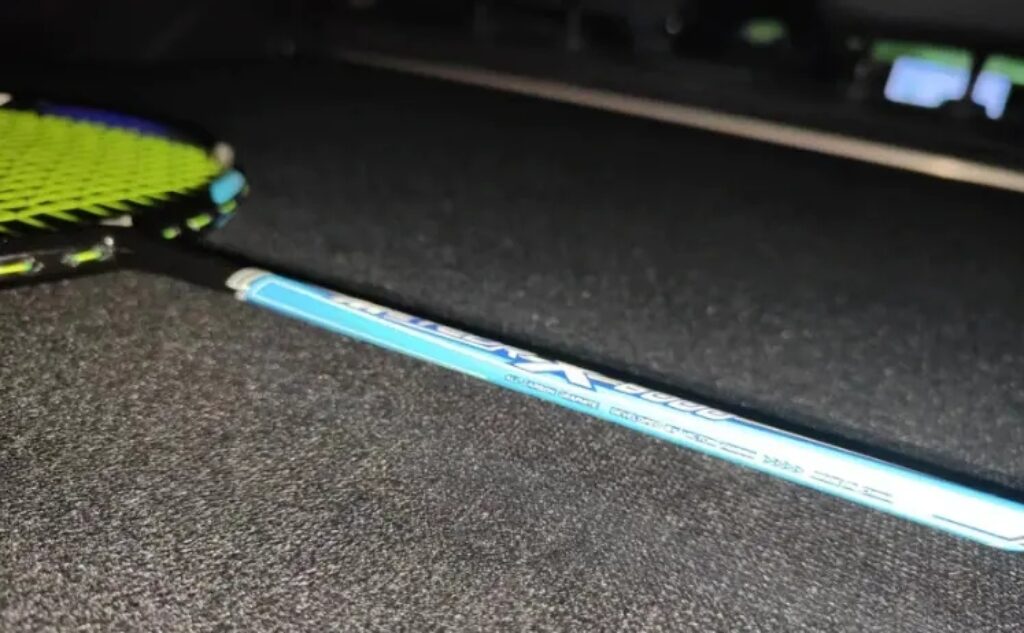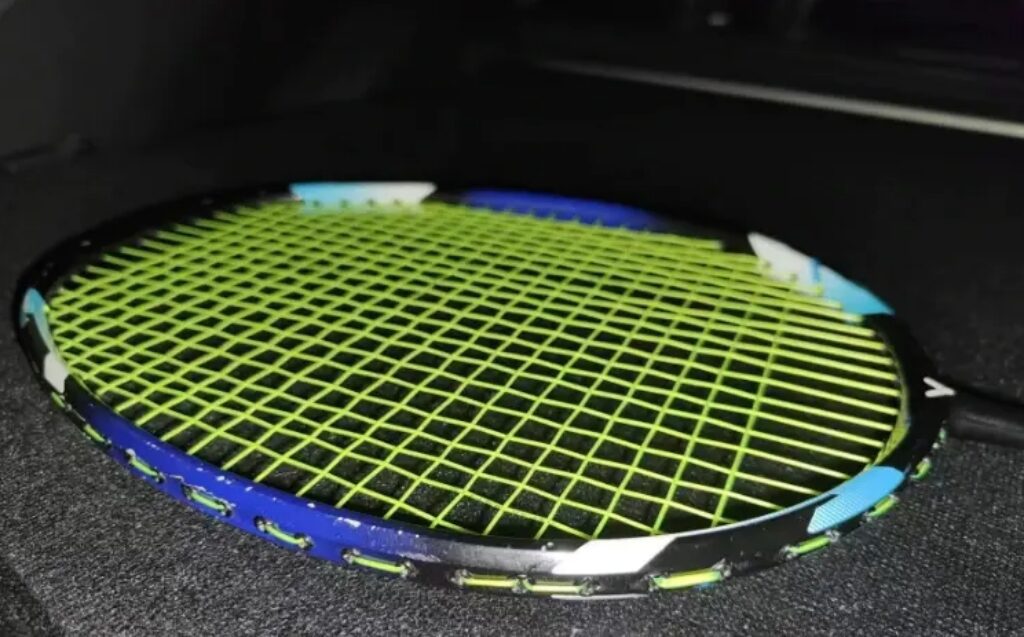It seems I’ve reached a point where I’m no longer picky about rackets, and I can enjoy even entry-level models that I wouldn’t have high expectations for. Besides the player versions, I believe I’ve now tried all the high-end MX models. However, about a year ago, I frequently saw mid- to low-end MX models being sold second-hand, and in decent quantities. Oddly, despite MX’s high reputation, the non-premium models seem to lack spirit, like something is missing.
Let’s see where its soul went missing.

Specifications:
Weight: 4U G5, with grip, total weight in use: 92.87g, balance point: 293mm, shaft diameter: 7.2mm, length: 213mm, moderate stiffness, octagonal aerodynamic frame, 72-hole string bed, 9-3 o’clock grooves, tension guarantee 22-24 lbs, strung at 26-28 lbs with BS710.
This is a low-end, battle-worn racket, so there’s no need to expect much in terms of visual appeal. Even so, the MX6000 still carries some of the design flavor of the Meteor series. The green color, for example, reminds me of the MX30L. The multi-layered color scheme of the frame is a highlight, with black at the T-joint and head, blending into a gradient dark blue on the wings, giving it a nice layered look. The green accents at the 2, 10, 4, and 8 o’clock positions help break up the monotony. Since it also uses the octagonal aerodynamic frame, the edges of the paint are easily prone to chipping. Without the XT woven carbon fabric, there’s no need to expose the carbon fiber texture.

Although the MX series is typically associated with the 80-hole string bed, the 72-hole frame is also used in high-end models like the MX80B (which I’ve yet to complete testing), so it’s not surprising. The 72-hole string bed narrows towards the head, creating a small flat-top effect that may affect the sweet spot.
When actually holding the MX6000, it feels surprisingly light. The high-end MX models I’ve used were all 3U with balanced configurations, so they didn’t feel too light. But with this 4U MX6000, the feeling is somewhat plastic-like. However, the shaft’s stiffness isn’t too low, so overall the feel isn’t excessively discounted. Similarly, the aerodynamic efficiency of the frame is good, making me optimistic about its stability.

Thanks to the high swing speed, the MX6000 delivers good power when hitting, but the racket’s power transfer isn’t impressive among lower-end models. Players who prefer big arm swings might find it less comfortable because the lighter head, combined with a moderately stiff shaft, requires more active power generation. The sweet spot isn’t unusually large, but it’s distributed evenly, taking up about one-third of the string bed. Once you adjust, you can generate decent power with this racket.
In drives and blocks, the racket performs sharply, allowing for quick, consecutive exchanges during fast-paced rallies. However, the 72-hole string bed doesn’t respond as quickly as the 80-hole ones, and the direct feedback from the shuttle that’s typical in the MX series is lacking here. There’s a slight hesitation in the response.

This hesitation can actually be helpful when dealing with defensive shots, giving a little more time to generate power and buy some breathing room in tight situations. While the immediate feedback might not be as strong, the “wooden” feeling is also less pronounced (lacking spirit, perhaps).
The materials limit the racket’s ceiling in attacking and smashing, but for me, it’s sufficient. Since the shaft stiffness isn’t overly compromised, power transfer remains relatively smooth when hitting the sweet spot during full-power smashes. The loss of energy conversion into shuttle speed is manageable, giving me enough confidence to play aggressively from the backcourt. Of course, this requires a player with decent power generation skills. Beginners might find it easier to wield a hammer-like racket that offers more assistance in attack.

The gap in frame stability, however, is significant. I initially thought the octagonal frame’s stability was purely due to its structure, but without the XT carbon fabric, the MX6000’s lightness doesn’t help control shot placement, making it harder to hit sharp angles. This makes smashes less threatening, and the handling of delicate shots lacks precision. While net shots and placements aren’t too problematic—since I mainly play doubles and prefer direct net kills—the racket struggles in backcourt drops when it’s not a clean opportunity, often sending the shuttle too high and giving the opponent a chance.
There’s no need to delve into other details. Considering the price I got it for, I’m quite satisfied with this experience. It’s not quite at a level where I would recommend it, but I would still give it a positive review. I’m not sure what its brand-new price is, but the craftsmanship involved in the octagonal aerodynamic frame might push it a bit higher.

Leave a Reply